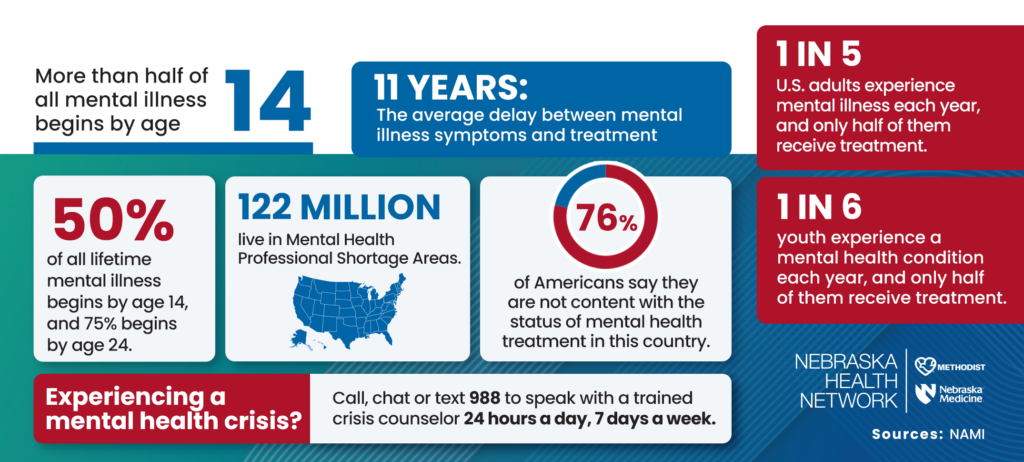One in five US adults experience a mental illness each year, yet only half of them receive treatment. And, according to NAMI, the average gap between the first sign of a mental illness and treatment is 11 years.
Several factors including patient stigma, provider shortages and cost all contribute to the lack of mental health treatment.
AAMC reports that less than one-third (28%) of the U.S. population lives in an area where there are enough psychiatrists and other mental health professionals available to meet the population’s needs. Defined as needs met, at 48%, Nebraska, and at 41% Iowa, are among the nation’s top coverage areas. Yet, that still leaves more than half of residents without adequate coverage.
Telehealth continues to address access issues and has shown steady use since COVID. Trilliant Health’s 2023 Trends Shaping the Health Economy Report showed that from 2020 to 2022, the share of telehealth visits for behavioral health conditions jumped from 42% to 63%.
Even when mental health providers are available, patients still face financial challenges. The Substance Abuse and Mental Health Services Administration reported that in 2020, 30% of adults with a mental illness reported not receiving care because their health insurance did not cover any mental health service or did not pay enough for mental health services.
Patients in need of free- or reduced-cost mental health support can search for local programs and services on CommunityRelay.com. NHN created a patient resource to help patients self-recognize symptoms and/or support a loved one in need of support.

